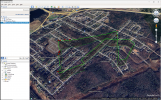I just received the Mavic Mini 3 Pro and I'm using the RC Pro Remote that I also use with my Mavic 3. The first flight went mostly smoothly, except for one issue. When I initiated the Return to Home (RTH) function, the drone wanted to land 3 meters away from the starting point, which wasn't as precise as I'm accustomed to with my Mavic 3. As it started descending and deviated from the starting point, I clicked cancel and manually landed it.
During the second flight, the RTH function once again wanted to land the drone 3 meters away from the starting point. This time, when I tried to cancel it, it didn't work. It seemed like the drone actually accelerated its descent (though that might have been my impression) and crashed into a bush that protected it. If there had been concrete or hard ground instead of the bush, the drone would have been damaged.
The automatic landing should have slowed down and landed the drone gently. At least, that's what my Mavic 3 does.
Additionally, I've noticed that there's no discernible difference between cine mode and normal mode. Both modes seem to have similar speeds.
Attached the log file. I cannot find explanation what happened. Anybody can analyze the last seconds?
How do I contact DJI. I found only options to send the product. Is there an option to send them files just for analysis?
During the second flight, the RTH function once again wanted to land the drone 3 meters away from the starting point. This time, when I tried to cancel it, it didn't work. It seemed like the drone actually accelerated its descent (though that might have been my impression) and crashed into a bush that protected it. If there had been concrete or hard ground instead of the bush, the drone would have been damaged.
The automatic landing should have slowed down and landed the drone gently. At least, that's what my Mavic 3 does.
Additionally, I've noticed that there's no discernible difference between cine mode and normal mode. Both modes seem to have similar speeds.
Attached the log file. I cannot find explanation what happened. Anybody can analyze the last seconds?
How do I contact DJI. I found only options to send the product. Is there an option to send them files just for analysis?
Last edited:












